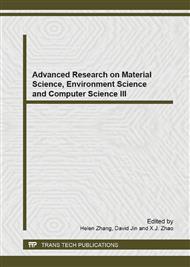p.369
p.374
p.378
p.382
p.386
p.390
p.394
p.398
p.402
Study on Electronic Materials with Performance of Meander-Line Inverted-F Antenna
Abstract:
Inverted-F antenna loaded meander-line was studied by using High Frequency Structure Simulator V11(hereinafter referred to as HFSS V11). Research had focused on main performance parameters of Inverted-F antenna which loaded different number of meander-lines and different height of meander-lines. According to research, main performance parameters of inverted-F antenna, such as resonant frequency, resonance impedance and S11 parameter of resonance point could be adjusted effectively. Inverted-F antenna could be miniaturized effectively by selecting appropriate number and height of meander-lines. The technology of loaded meander-line is a kind of simple and effective way that can be applied to the RFID field and other areas that have high requirements for miniaturization of antenna.
Info:
Periodical:
Pages:
386-389
Citation:
Online since:
January 2014
Authors:
Price:
Сopyright:
© 2014 Trans Tech Publications Ltd. All Rights Reserved
Share:
Citation:


